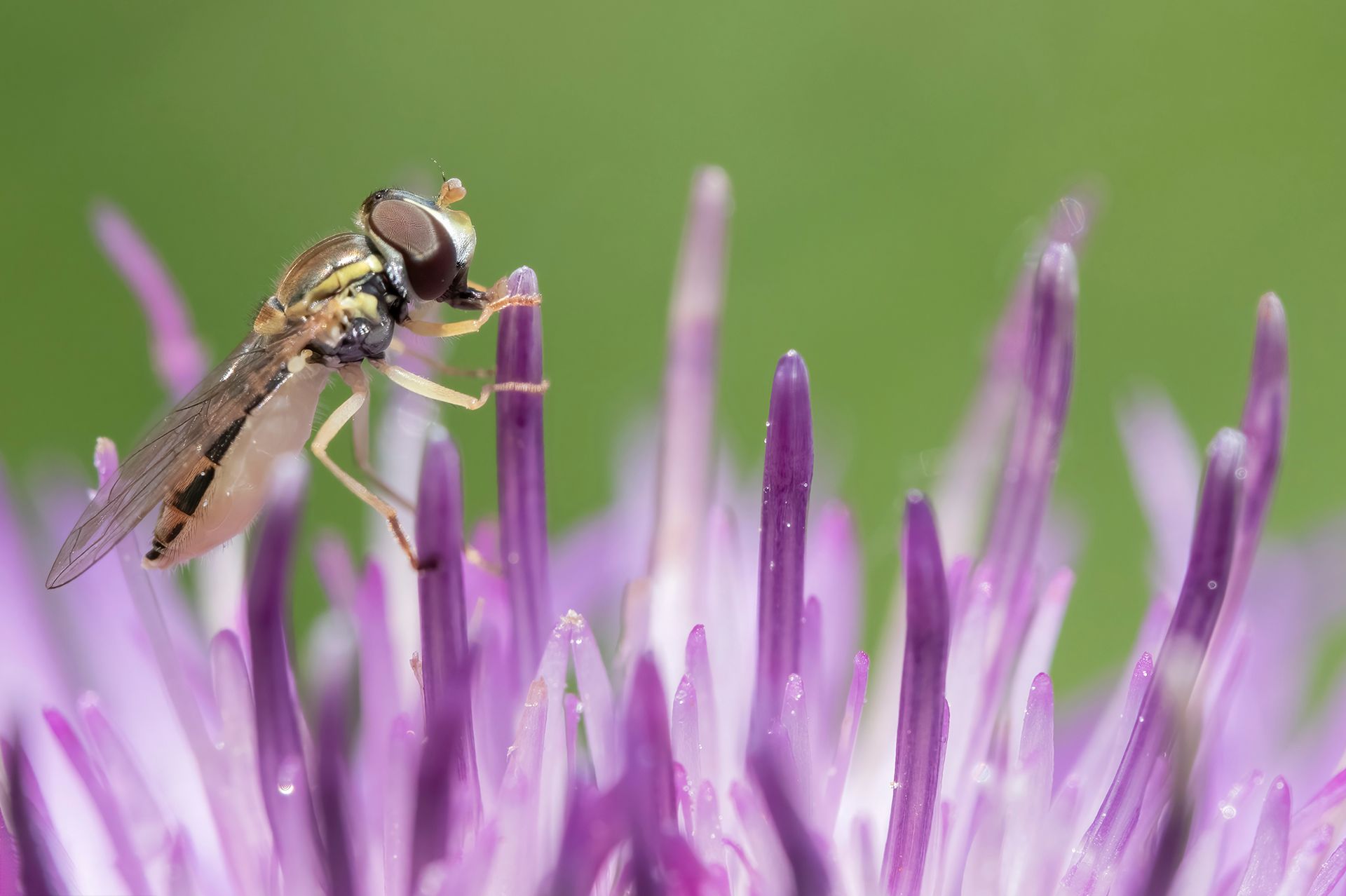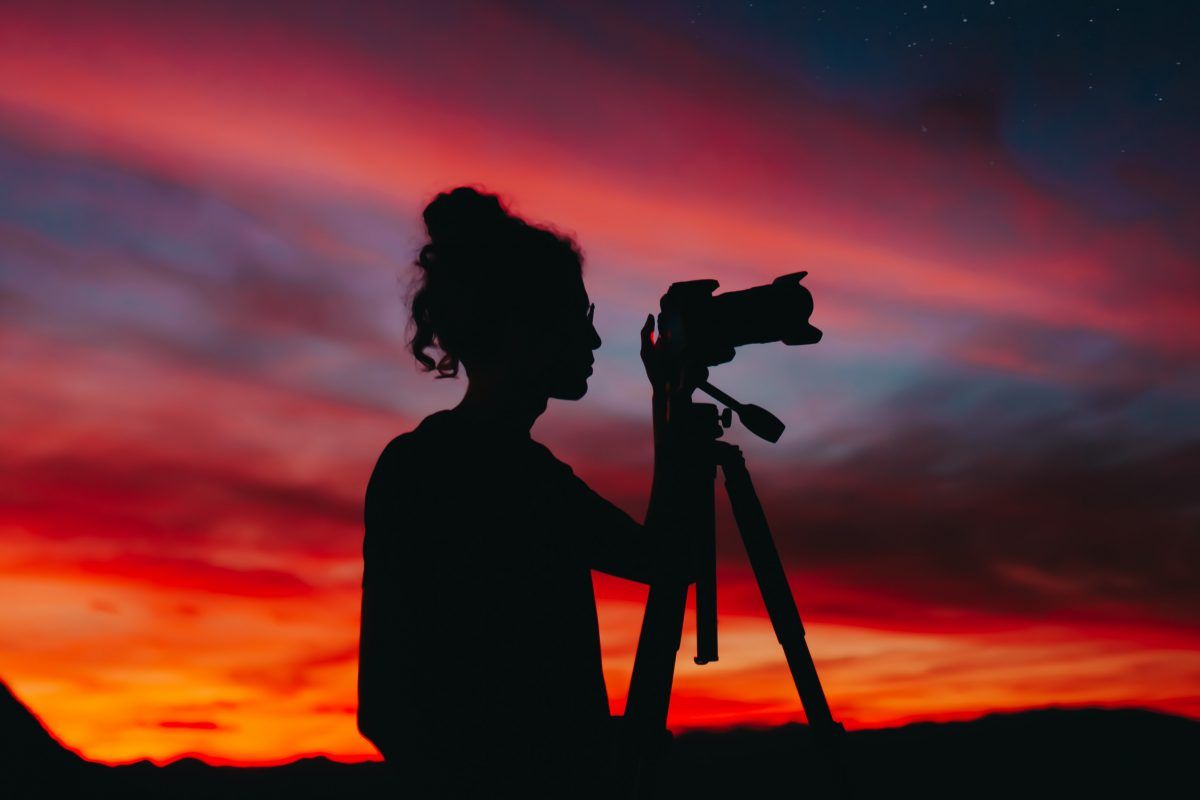Blog
our photo advice
Follow the columns of our experts! You can also consult our products section, which are mentioned in our articles.
Blog
our photo advice
Follow the columns of our experts! You can also consult our products section, which are mentioned in our articles.

By Cloé Pelletier-Bossé
•
July 18, 2023
Proper Preparation for a Macro Photography Session Macro photography is not a very complicated field, as a simple garden can provide hours of enjoyment. However, it requires patience, skill, and creativity. If you want to improve and respect nature, it is important to prepare well in advance. We operate in a wild and sensitive environment, in contact with fragile and skittish animals. Therefore, being careful is very important if you want to approach this with the passion it deserves. Here are some tips from my personal experience and advice I’ve received to maximize the chances of returning with a calm mind and, most importantly, allowing you to capture images that meet your expectations!

By Yves Pinsonneault
•
May 9, 2023
Nikkor Z 100-400 f/4.5-5.6 VR S We tested for you: Nikkor Z 100-400 f/4.5-5.6 VR S This lens is designed for users of Nikon Z series mirrorless cameras. It is compatible with all Z series models, including both APS-C and full-frame (FF) bodies. As the model name indicates, its coverage ranges from 100mm to 400mm (150mm to 600mm equivalent on APS-C) and features a variable aperture depending on the zoom ring position. At 100mm, the maximum aperture is f/4.5, and at 400mm, it is f/5.6, which is more than acceptable for general outdoor photography. It’s also important to note that Z series cameras have excellent high ISO performance, which means this lens can be used in a wide variety of situations without limitation. The box includes lens caps and a lens hood, which should always be equipped. You will see this lens in the hands of various sports photographers and wildlife photographers seeking detail and precision in their images, but at relatively short distances. 400mm is a bit limited for bird photography unless you are close to the subject. Weight: Right off the bat, the lightness of the lens is striking, and it balances well on cameras like the Z9 or even a Z6/Z6II. The balance is a bit more challenging with a Z30/50, but it’s still manageable with some practice and familiarity. Autofocus: Fast—very fast, in fact—and consistently accurate. Even in the shade, the subject is focused with spectacular speed. The speed easily compares to that of the Nikkor Z 70-200 f2.8 VR S. Regardless of the camera body used, it performs flawlessly and is highly effective. It is definitely worthy of the S series lenses (Nikon’s professional series for Z bodies).

By LORD PHOTO
•
July 19, 2022
The Photographer's Best Friend The tripod is the only sure way to ensure image stabilization. Sometimes it's disliked because it's cumbersome and can seem heavy, but the tripod remains the only reliable method to ensure image stabilization and, implicitly, the sharpness of your photo. There are tripods for all types of cameras, made from various materials. They adapt to all cameras, and often, powerful lenses come with a collar that allows the lens to be mounted on the tripod head. How to Choose a Tripod First, assess your equipment and the type of photography you want to do. It's essential to determine: A) Is it too heavy for me to bring along? B) Is it robust and stable enough to support my equipment and ensure its safety? Many lenses have a stabilization system, and some camera bodies do as well. However, it's important to understand that neither is as effective as a tripod. Another important detail to consider is the height of the tripod and the type of head it comes with. Ball heads are quick to adjust and very sturdy. They are excellent for general photography and easy to use. However, they are not recommended for videography unless you don't need to move the camera (fixed camera for the entire shot). For video, a head with a panning arm (allowing left-to-right and right-to-left movement) is highly recommended. In most cases, this head is also suitable for general photography if it can quickly switch to a vertical position. Materials Avoid plastic tripods as they are fragile and can easily break in the cold. Aluminum is quite suitable and relatively lightweight. The ultimate choice is carbon, which is very light and unaffected by heat or cold. It also has better vibration tolerance. However, it is more expensive. A monopod is an interesting solution for supporting the weight of your equipment, but it doesn't replace the tripod and doesn't have its stabilization benefits. It can be handy, though, as it relieves the photographer of the concern about the weight. For stabilized lenses and camera bodies, manufacturers recommend deactivating these systems when using a tripod. Since the tripod itself acts as a stabilizer, the two systems can conflict, resulting in blurred images due to double stabilization.

By Cloé Pelletier-Bossé
•
July 18, 2023
Proper Preparation for a Macro Photography Session Macro photography is not a very complicated field, as a simple garden can provide hours of enjoyment. However, it requires patience, skill, and creativity. If you want to improve and respect nature, it is important to prepare well in advance. We operate in a wild and sensitive environment, in contact with fragile and skittish animals. Therefore, being careful is very important if you want to approach this with the passion it deserves. Here are some tips from my personal experience and advice I’ve received to maximize the chances of returning with a calm mind and, most importantly, allowing you to capture images that meet your expectations!

By Yves Pinsonneault
•
May 9, 2023
Nikkor Z 100-400 f/4.5-5.6 VR S We tested for you: Nikkor Z 100-400 f/4.5-5.6 VR S This lens is designed for users of Nikon Z series mirrorless cameras. It is compatible with all Z series models, including both APS-C and full-frame (FF) bodies. As the model name indicates, its coverage ranges from 100mm to 400mm (150mm to 600mm equivalent on APS-C) and features a variable aperture depending on the zoom ring position. At 100mm, the maximum aperture is f/4.5, and at 400mm, it is f/5.6, which is more than acceptable for general outdoor photography. It’s also important to note that Z series cameras have excellent high ISO performance, which means this lens can be used in a wide variety of situations without limitation. The box includes lens caps and a lens hood, which should always be equipped. You will see this lens in the hands of various sports photographers and wildlife photographers seeking detail and precision in their images, but at relatively short distances. 400mm is a bit limited for bird photography unless you are close to the subject. Weight: Right off the bat, the lightness of the lens is striking, and it balances well on cameras like the Z9 or even a Z6/Z6II. The balance is a bit more challenging with a Z30/50, but it’s still manageable with some practice and familiarity. Autofocus: Fast—very fast, in fact—and consistently accurate. Even in the shade, the subject is focused with spectacular speed. The speed easily compares to that of the Nikkor Z 70-200 f2.8 VR S. Regardless of the camera body used, it performs flawlessly and is highly effective. It is definitely worthy of the S series lenses (Nikon’s professional series for Z bodies).

By LORD PHOTO
•
July 19, 2022
The Photographer's Best Friend The tripod is the only sure way to ensure image stabilization. Sometimes it's disliked because it's cumbersome and can seem heavy, but the tripod remains the only reliable method to ensure image stabilization and, implicitly, the sharpness of your photo. There are tripods for all types of cameras, made from various materials. They adapt to all cameras, and often, powerful lenses come with a collar that allows the lens to be mounted on the tripod head. How to Choose a Tripod First, assess your equipment and the type of photography you want to do. It's essential to determine: A) Is it too heavy for me to bring along? B) Is it robust and stable enough to support my equipment and ensure its safety? Many lenses have a stabilization system, and some camera bodies do as well. However, it's important to understand that neither is as effective as a tripod. Another important detail to consider is the height of the tripod and the type of head it comes with. Ball heads are quick to adjust and very sturdy. They are excellent for general photography and easy to use. However, they are not recommended for videography unless you don't need to move the camera (fixed camera for the entire shot). For video, a head with a panning arm (allowing left-to-right and right-to-left movement) is highly recommended. In most cases, this head is also suitable for general photography if it can quickly switch to a vertical position. Materials Avoid plastic tripods as they are fragile and can easily break in the cold. Aluminum is quite suitable and relatively lightweight. The ultimate choice is carbon, which is very light and unaffected by heat or cold. It also has better vibration tolerance. However, it is more expensive. A monopod is an interesting solution for supporting the weight of your equipment, but it doesn't replace the tripod and doesn't have its stabilization benefits. It can be handy, though, as it relieves the photographer of the concern about the weight. For stabilized lenses and camera bodies, manufacturers recommend deactivating these systems when using a tripod. Since the tripod itself acts as a stabilizer, the two systems can conflict, resulting in blurred images due to double stabilization.





